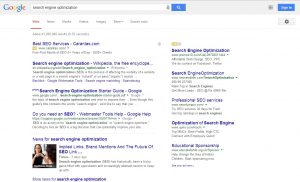11 Best Practices for Mobile-first Indexing
Mobile first index means Google will mainly use the mobile version of your website content to index and rank.
In the past Google used to consider the content in the desktop version of a website to evaluate the relevance of page content to the user query.
Since most users use mobile devices to access Google search, the search engine giant has decided that it will primarily use the mobile version to crawl and index.
To make sure that your users get the best experience and to make sure that you don’t lose out to your competitors on Google search results, you have to follow these best practices.
- You have to make sure both the mobile version and desktop version of your website is accessible to the Googlebot. The bot must not find it difficult to render both versions.
- Make sure that both mobile and desktop have the same content. Offering different content for mobile and desktop could affect your website.
- You must use the same meta robots tag in both versions of the website.
- Use same headings in both versions.
- Make sure that both versions of the website have the same structured data.
- Always use high quality images.
- Make sure that you don’t use images that are too small or images that have low resolution when viewed through a mobile device.
- When you add videos to your website, you must make sure that they are placed at positions where the visitors can easily find the videos.
- Both images and videos must be in supported formats.
- While you add images and videos in your websites, make sure that they have the same descriptive title, captions, file names, meta and text in both mobile and desktop versions.
- Make sure that you have same error status for both mobile and desktop versions of the website.
If you are interested to find more detailed information or want to know more about the troubleshooting tips provided by Google then please find them at Google’s mobile-first indexing best practices document.






